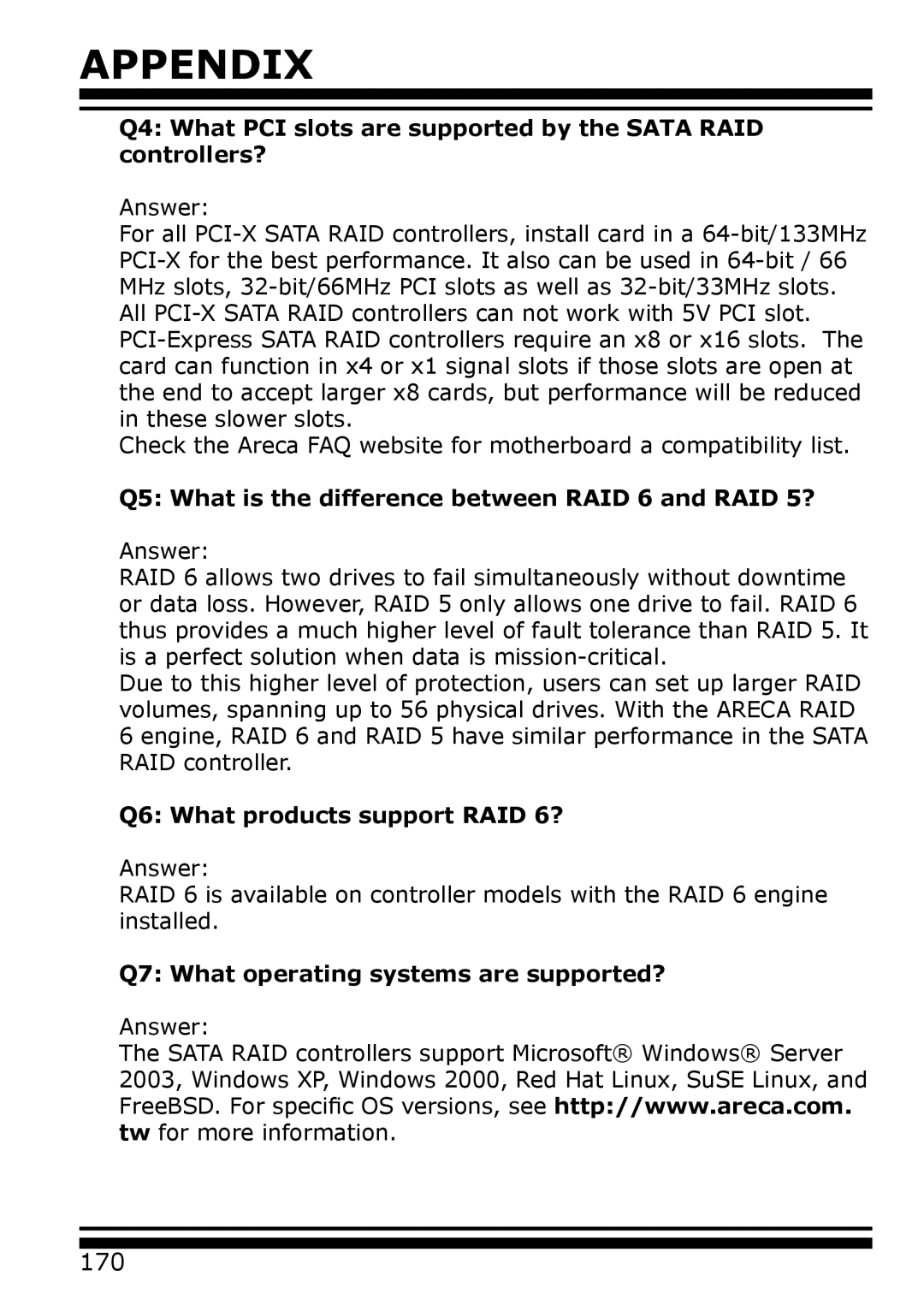
APPENDIX
Q4: What PCI slots are supported by the SATA RAID controllers?
Answer:
For all
Check the Areca FAQ website for motherboard a compatibility list.
Q5: What is the difference between RAID 6 and RAID 5?
Answer:
RAID 6 allows two drives to fail simultaneously without downtime or data loss. However, RAID 5 only allows one drive to fail. RAID 6 thus provides a much higher level of fault tolerance than RAID 5. It is a perfect solution when data is
Due to this higher level of protection, users can set up larger RAID volumes, spanning up to 56 physical drives. With the ARECA RAID 6 engine, RAID 6 and RAID 5 have similar performance in the SATA RAID controller.
Q6: What products support RAID 6?
Answer:
RAID 6 is available on controller models with the RAID 6 engine installed.
Q7: What operating systems are supported?
Answer:
The SATA RAID controllers support Microsoft® Windows® Server 2003, Windows XP, Windows 2000, Red Hat Linux, SuSE Linux, and FreeBSD. For specific OS versions, see http://www.areca.com. tw for more information.
170
